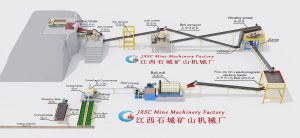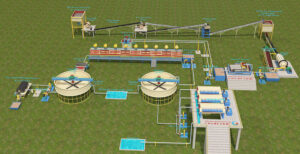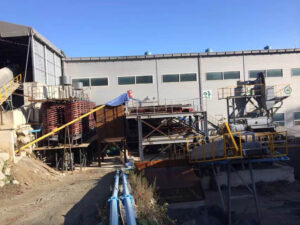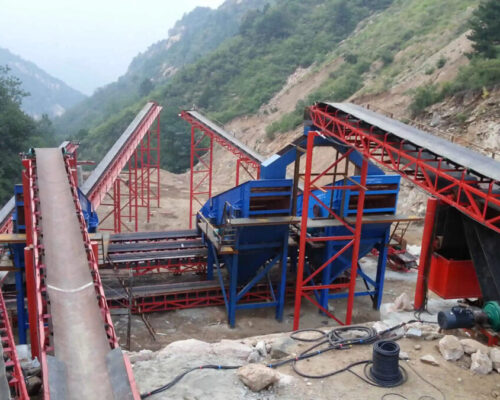
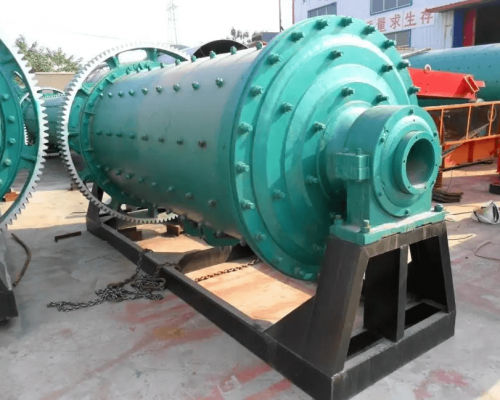
Tin Ore Mining Process
The tin ore has a higher density than symbiotic minerals, so the mining process of tin ore is usually gravity separation. However, tin ore is often accompanied by iron oxide minerals such as magnetite and hematite, so it is impossible to completely separate the ore only by the gravity separation method. Therefore, the tin ore extraction method will also use the magnetic process and flotation process methods.
Tin Ore Separation Process
Introduction
About Tin Ore
Tin is a silvery white metal with strong luster, relative density of 7.0, low melting point (230 ℃), hardness of 3.75, and soft and good ductility. There are more than 50 kinds of tin containing minerals known in nature, and about 20 kinds of main Tin Minerals. Cassiterite is mainly of economic significance, followed by yellow tin ore. In some deposits, pyrite, antimony tin lead ore, cylindrical tin ore, sometimes black sulfur silver tin ore, black boron tin ore, Malayan stone, cassiterite and magnesium tin ore can also be relatively enriched to form industrial value.
The main beneficiation of tin ore is gravity separation because it has a higher density than symbiotic minerals. However, tin ore is often accompanied by iron oxide minerals such as magnetite and hematite, so it is impossible to completely separate the ore only by the gravity separation method. Therefore, the tin ore extraction method will also use the magnetic process and flotation process methods.
Mineral Processing
Tin Ore Processing
- Sulfide Tin Ore Extraction Process
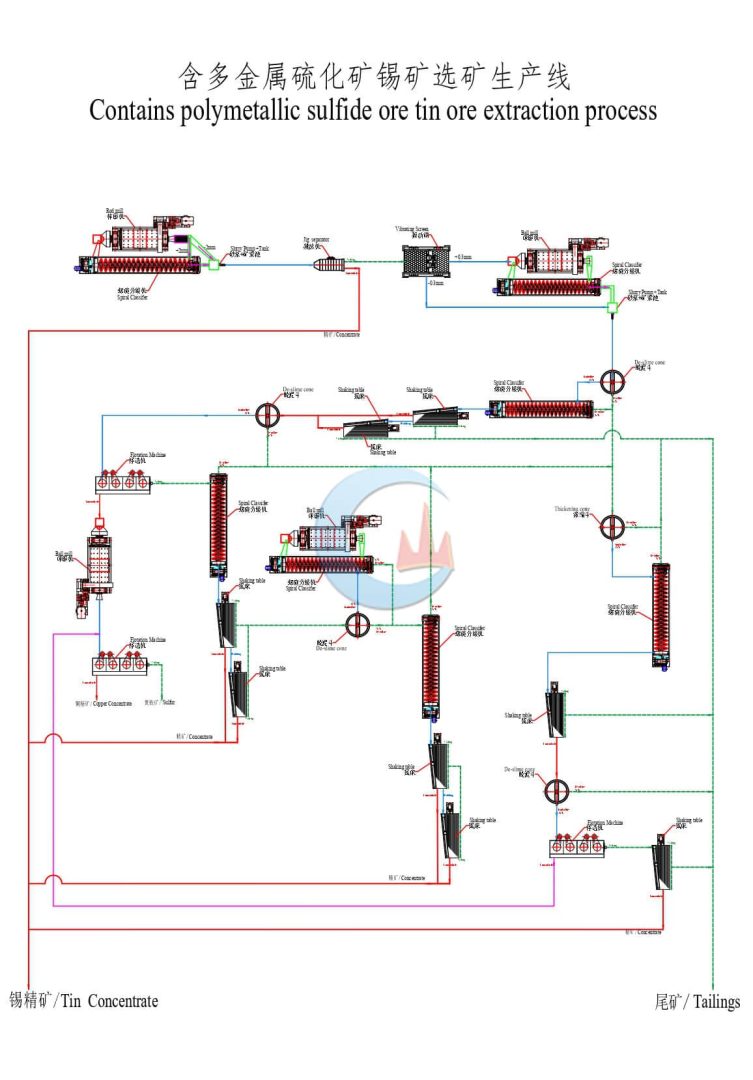
Crushing & Screening
Crush the raw ore to 20mm, then screen it into two particle sizes, (20mm~4mm) and (4mm~0mm).
Preselecting
Put the 20~4mm ore into a heavy medium cyclone to be selected. Then the ore will enter the rod mill. After that, it will be preselected in the jig. The tailings over 2mm will be abandoned, and the ore below 2mm will be put into a shaking table.
Bulk Flotation
The concentration from the jig and shaking table will be separately selected by bulk flotation. The tailings will enter the shaking table to get qualified tin concentrates.
Separating Flotation
After the bulk flotation, the concentrate will be fine grinded, then will be doing the flotation separation of lead zinc ore. After that Lead antimony concentrates and zinc concentrates will be produced.
Gravity Separation
The tin pulp enters into Φ300mm hydrocyclone, then overflow to Φ125mm and Φ75mm hydrocyclone group to remove the fine mud. The sand setting will enter into the process of thickening, desulphurization by flotation, and then cassiterite flotation.
2. Alluvial Tin Processing Plant
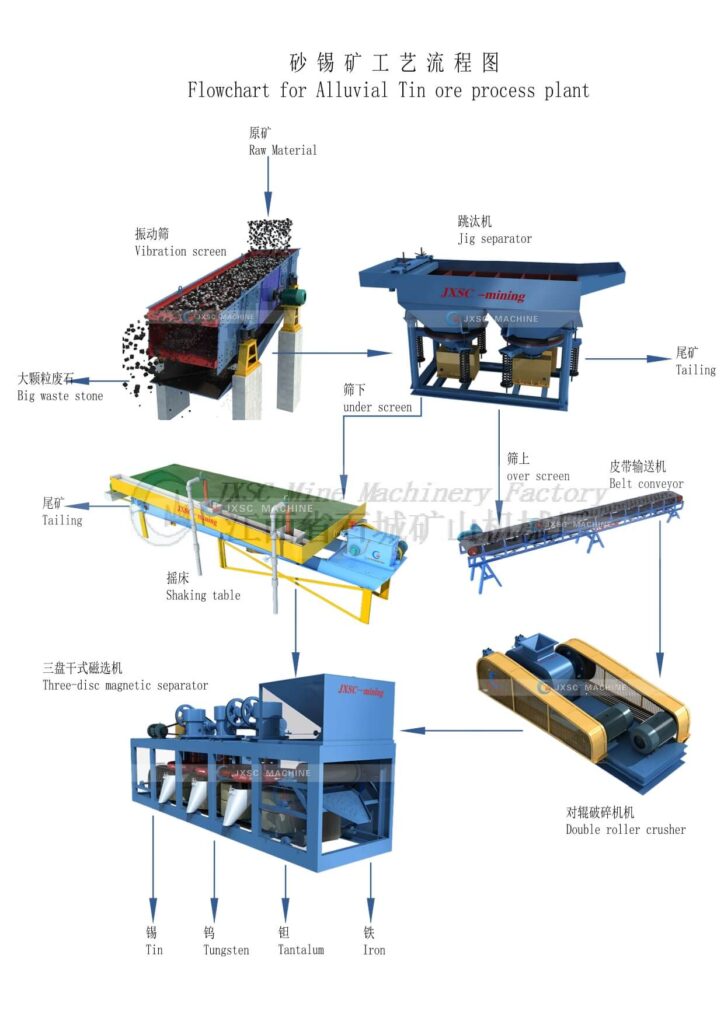
3. Alluvial Tin and Rock Tin Processing Plant
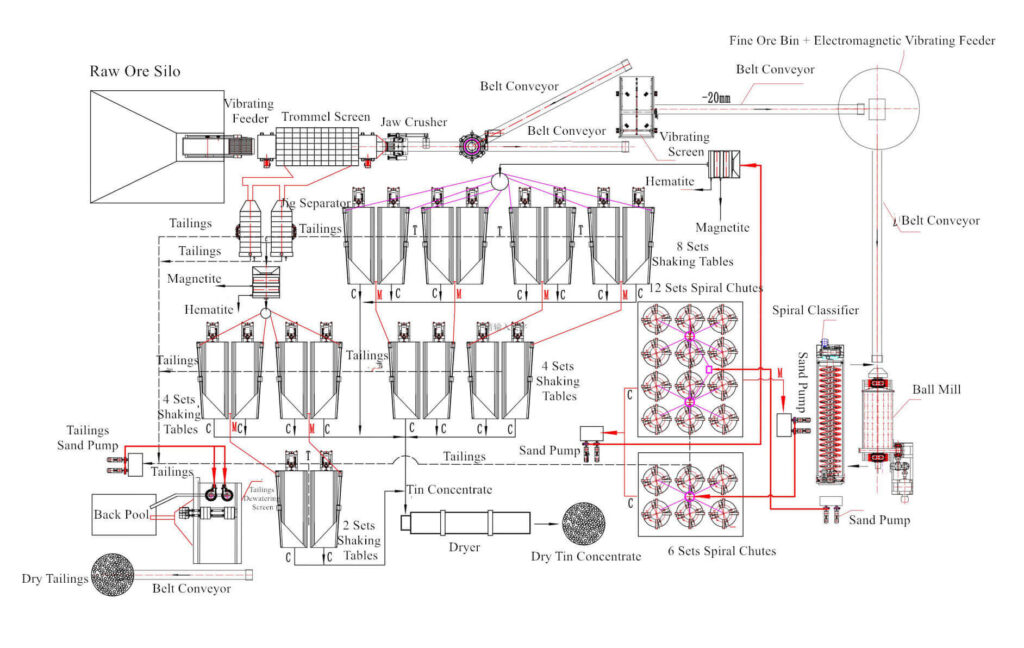
Flowchart Explanation
- The raw ore is fed into the trommel screen for washing a few little clays and can separate the gravel or stone which needs to crush&grind to get the inside tin, the separated gravel can transfer to the next jaw crusher by the belt conveyor. After the jaw crusher, goes to a cone crusher for second crushing. The output from the cone crusher goes to a vibrating screen for sieving. The overscreen size back to the cone crusher for crushing again.
- The under-screen particles will go to the ball mill for grinding. There is one hopper for transferring and buffering materials before being fed into the ball mill. Under the hopper, there is an Electromagnetic vibration feeder for feeding the material more evenly. Ball mill and spiral combination circulating closed-circuit system, which can make sure the final output meets less than 200mesh (0.074mm) The small fine particles from the spiral classifier will transport to first stage spiral chute separator by a slurry pump. The middlings from the first stage spirals separator will go to the second stage spirals separator. All the concentrates from the spiral separators will transport to two drums magnetic separators to separate the iron/Fe material( Like magnetite, hematite).
- After separating the Iron first, the others mineral-like tin (which do not contain the magnetism) will go to a two-stage shaking table for Tin separation. The middlings from the first stage shaking table will go to the second stage shaking table for beneficiation again to improve the recovery rate. The shaking table quantities can adjust based on your mine situation and requirements.
- The under-screen from the first trommel screen machine will go to the jig machine. The jig screen meshes with a 2mm aperture. The concentrates from the jig machine go to two drums magnetic separator separate the iron/Fe material first. After removing the iron, then goes to the shaking table for Tin separation. The middlings from the first stage shaking table will go to the second stage shaking table for beneficiation again to improve the recovery rate.
- All the final tin concentrates from the second stage shaking table will go to the dryer machine for drying.
- All the tailings from the jig machine, spiral chute separator, and shaking tables will go to a dewatering screen via a slurry pump for dewatering. After precipitation, the water can be recycled.
- The overscreen waste can transport away by belt conveyor.
More Tin Ore Process Plants Solutions

